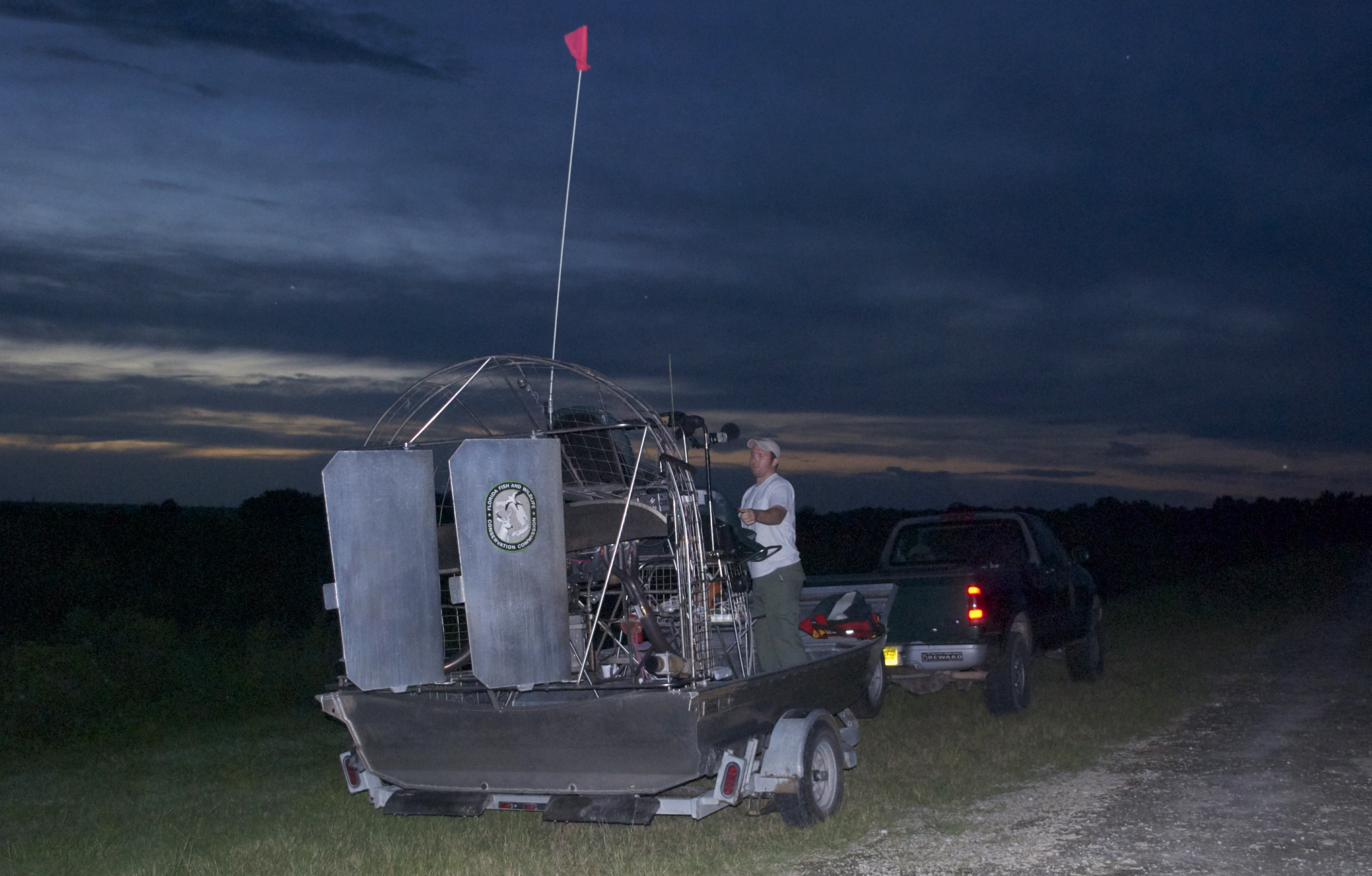
Marisa Tellez uses a microscope in a Mcneese State University lab to identify different species of nematode parasites found in the stomachs of alligators. The university is located in southern Louisiana.
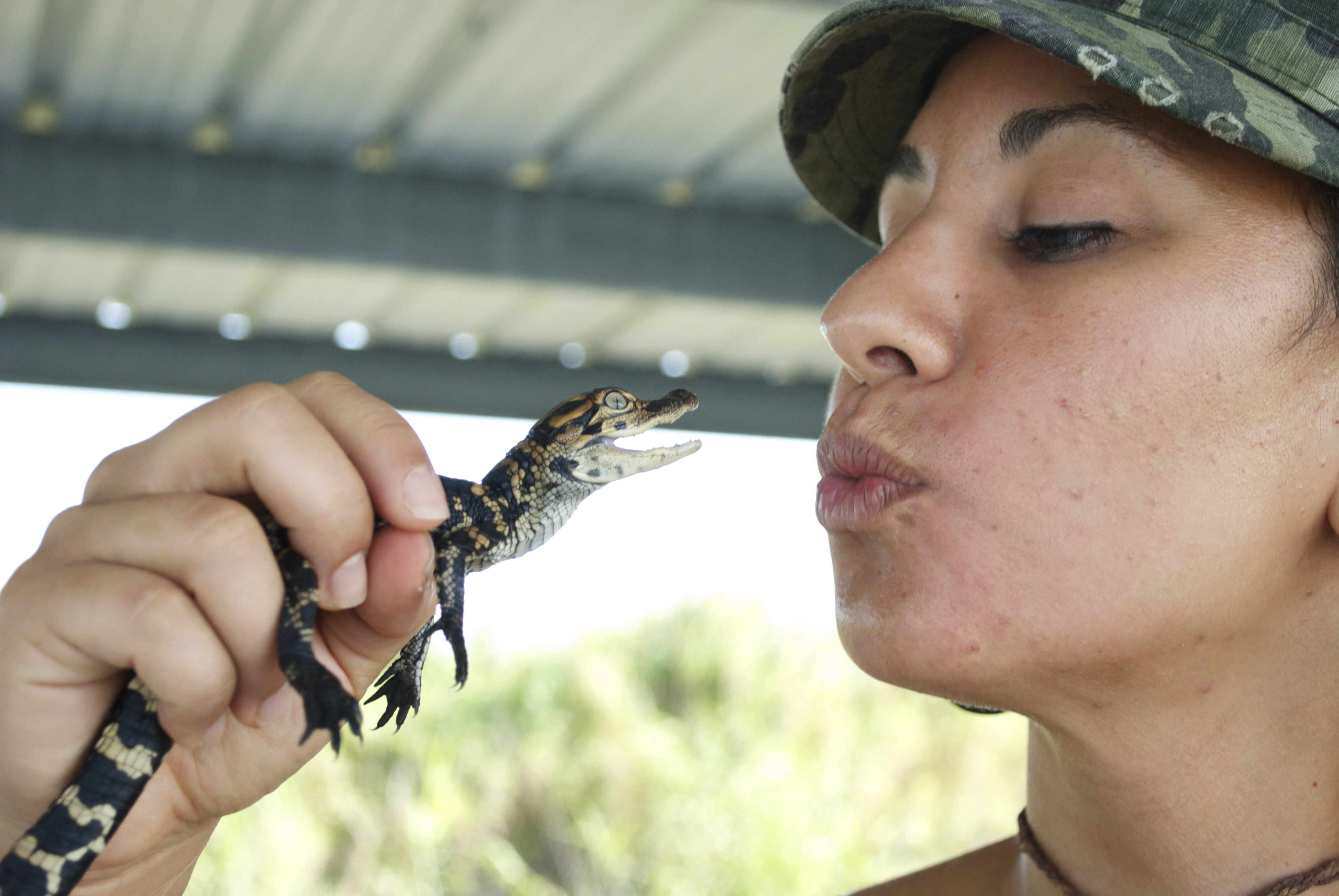
Doctoral student Marisa Tellez, my mentor and role model, offers a kiss to a baby alligator during our stint at Rockefeller Wildlife Refuge, La.

Shah’s first capture, a 3-foot yearling, put up a fight until his release. Shah caught the crocodilian during a survey with Florida Fish and Wildlife, the state’s local wildlife authority. They measured, determined the sex, weighed and tagged the gator. (Courtesy of Marisa Tellez)

The hunting grounds of the American alligator in the Everglades, a marshy area located in Southern Florida.

Professor Mark Merchant of Mcneese State University draws blood from a hatchling. The aim of the experiment was to determine the time of release of corticotrophins when baby alligators were subjected to a stress stimulus.
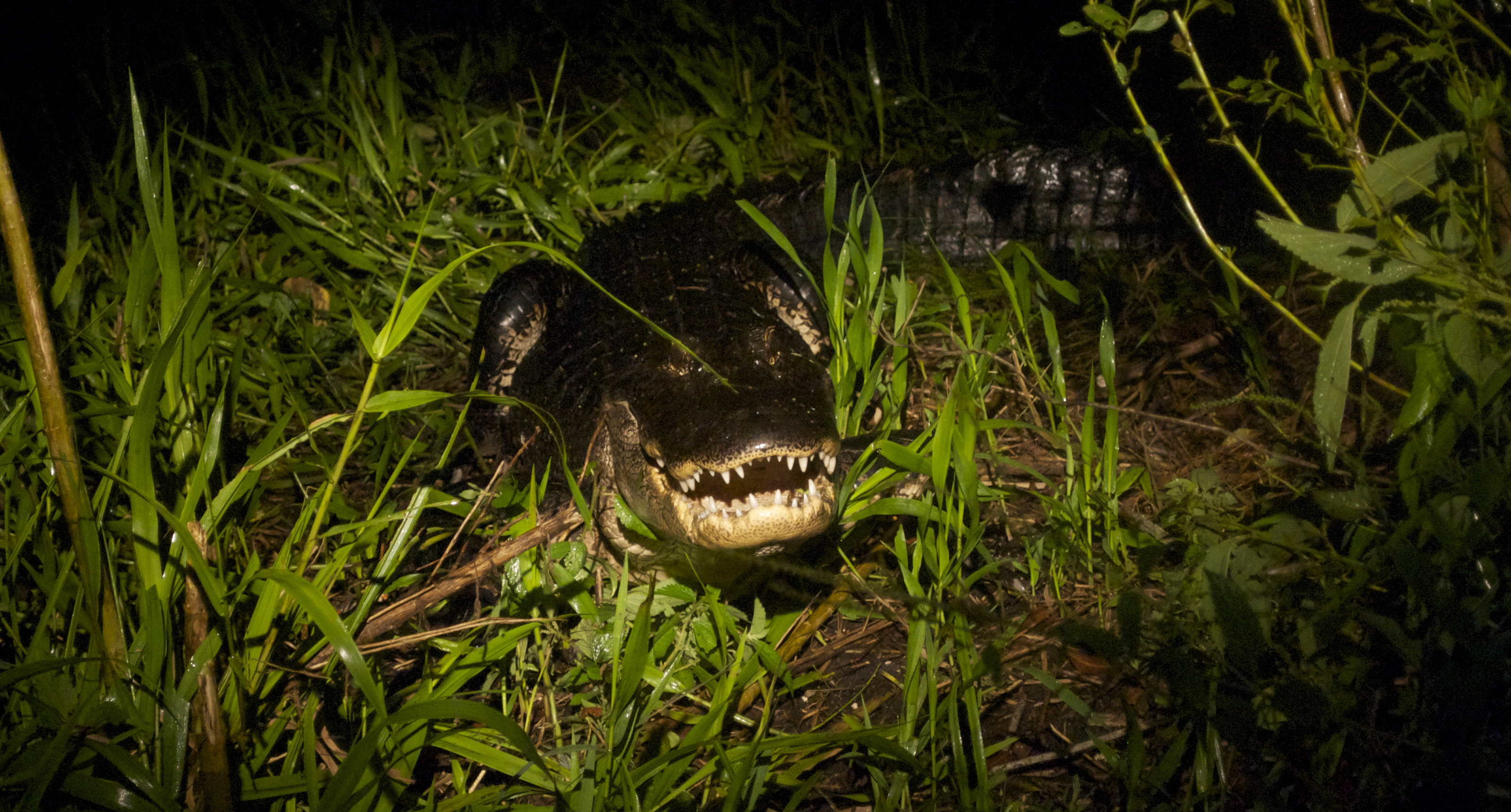
The backwaters in the marshes are lined by high banks on each side. When the air-boat pulled closed to shore, we discovered a female alligator on the shore, defending her nest. She momentarily slid onto the boat, while we tried to push the boat away from the marsh bank. It was a startling moment.
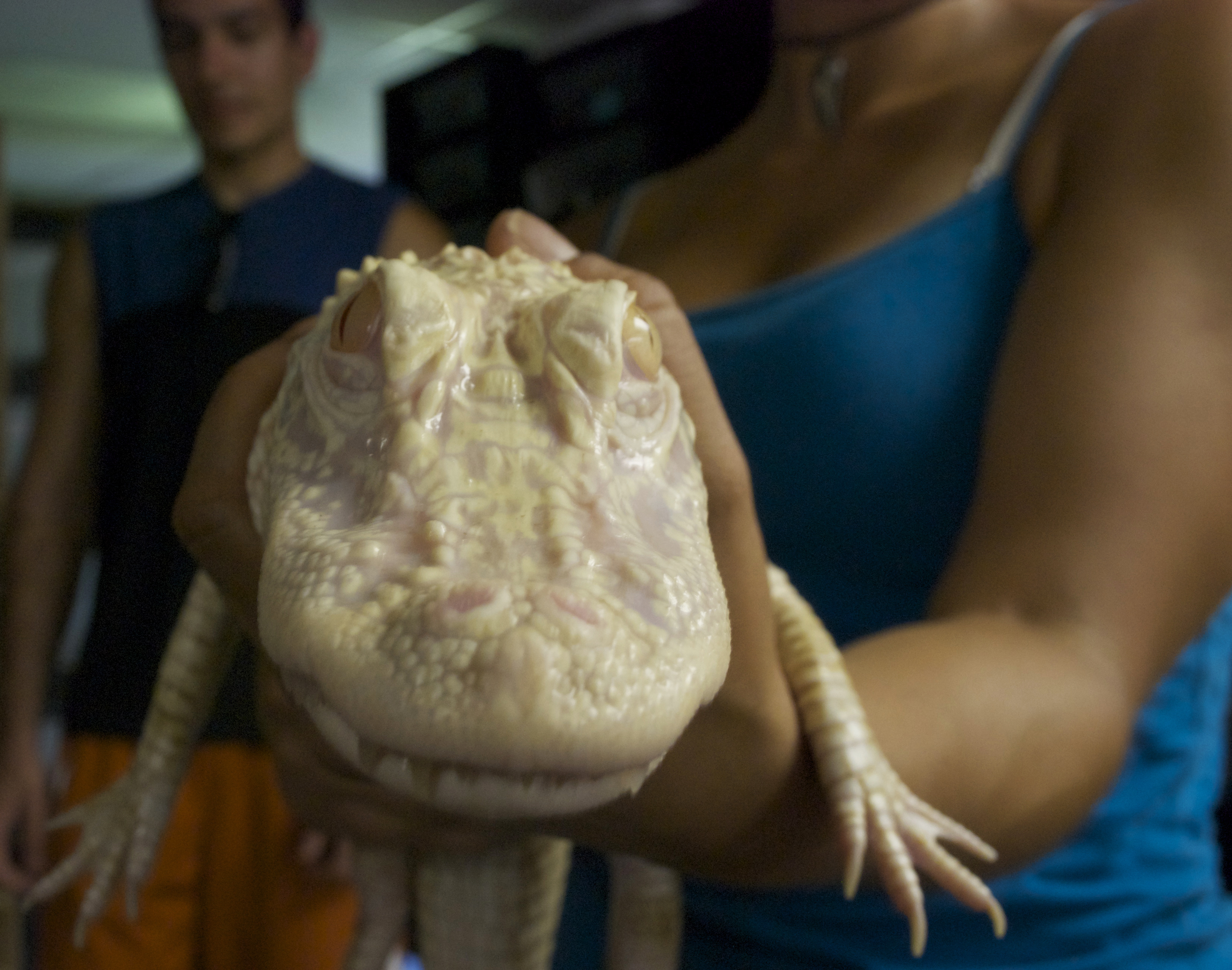
Precious, one of the first captive-bred albino alligators. She is now two-and-a-half years old and measures about 3 feet.
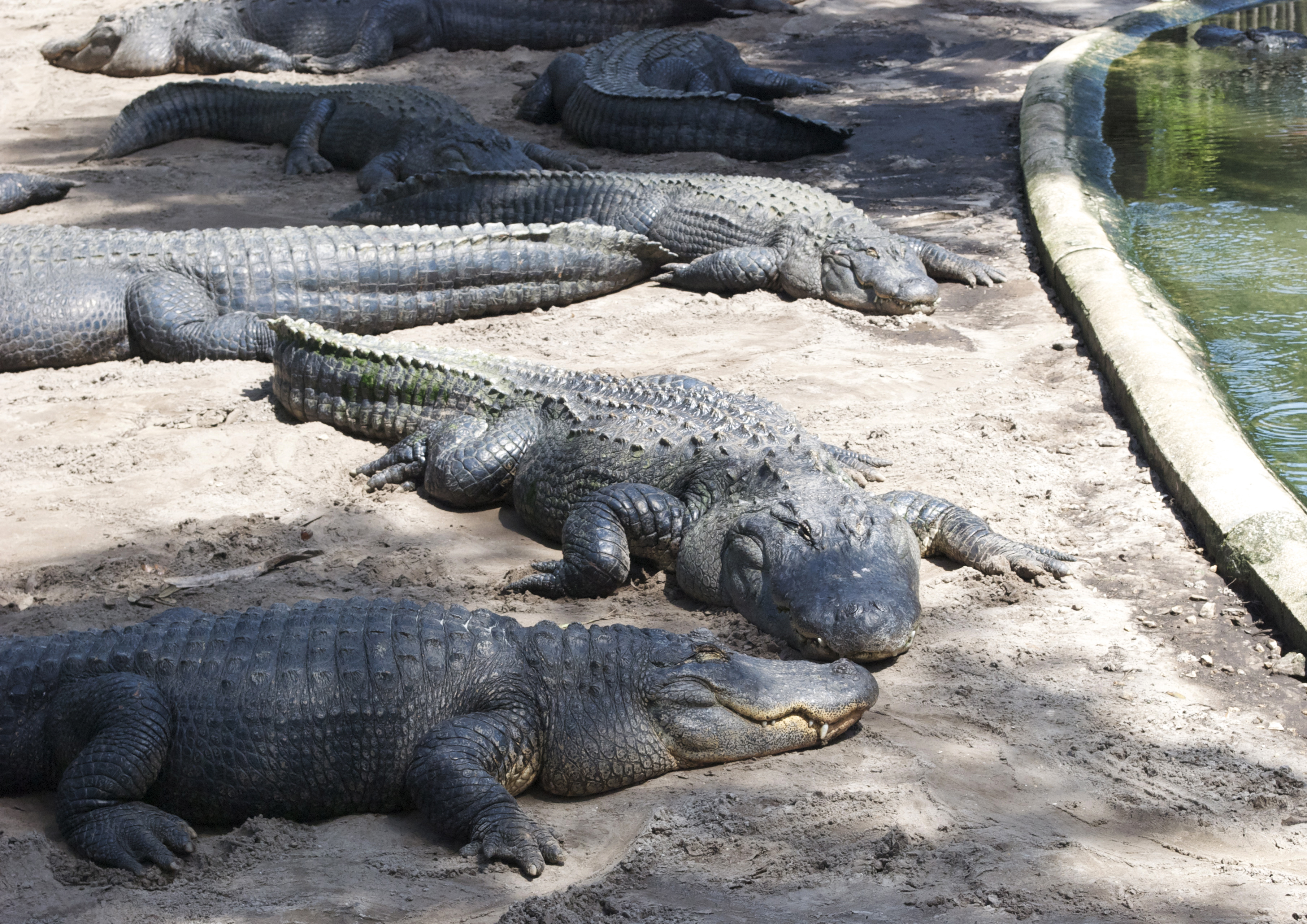
The gator pit at St. Augustine Alligator Farm, located in northern Florida. The farm is known to hold some of the largest captive alligators and all 23 crocodilian species of the world.
“You want to see something gnarly?”
I had my reservations, but I nodded and followed Marisa Tellez, a doctoral student in the UCLA Department of Ecology and Evolutionary Biology, into her office.
This was during my “rookie” weeks as a Daily Bruin photographer. This was during the beginning of fall quarter when we wrote an article on Tellez in December.
The only reason I had signed up for the portrait shoot for the newspaper was because its title had included the words “female Crocodile Hunter.” Being a wildlife enthusiast since, well, since I was old enough to comprehend what animals were, I had practically jumped on this occasion.
Tellez dug into her office freezer and conjured up an American alligator head to pose for a portrait shot.
She is one of the few crocodilian parasitologists in the world, and part of her doctoral dissertation involves examining internal parasites of alligators.
Because alligators are apex predators, food moves through the different trophic levels of the ecosystem and ends up in their digestive tracts. Any pollutants in the environment will be “bio-magnified” inside alligators, and so the parasites in them can be used to determine if there are pollutants in the environment.
Tellez also uses the gators’ internal parasites to explain the relationship between parasite and host.
That day at the shoot, I told Tellez my interest in her research, and she gladly let me help her out. So I spent the remaining months of school digging through gator fecal matter looking for small white worm-like parasites, called Trematodes, and learning about other parasites that can be found in different parts of the gators’ internal organs.
Those eight months somewhat prepared me for what was about to come ““ an epic voyage across the American Deep South this summer ““ intimately studying alligators and their internal parasites with Tellez and two other UCLA students. Every year for the past four years, during the alligator harvests in Louisiana and Florida, Tellez dissects gators and collects their internal parasites for further scrutiny and analysis.
Now, nine months, 4,700 miles, eight states and a couple of near-death experiences later, I can safely say Tellez helped me relive my childhood dream: to work with wildlife and in wildlife conservation.
Tellez and our team left on Aug. 5 and drove down from Los Angeles to Florida, where our dissections took place at Lake Lochloosa outside of Gainesville, Fla. We traveled through the desert ““ passing by the U.S.-Mexico border, stopping by countless gas stations and looking at the stark change in environment as we entered the bayous of the south ““ until we finally hit those Florida marshes.
Multiple dissections took place on this month-long trip: Four days in Lake Lochloosa, Fla., three days at Rockefeller Wildlife Refuge, La. and one day in Lafayette, La. The remainder of our time was spent traveling or doing on-field research in the labs at University of Florida, Gainesville and Mcneese State University.
Let me tell you guys something: Lab dissections are a breeze compared to butchering open a hard-leathered 11-foot American alligator. The fecal matter, guts and blood all added to the glory, while we spent our days out in the Florida heat and humidity sifting through internal organs looking for parasites.
But don’t let the descriptions turn you off ““ we had our “Crocodile Hunter” moments too. On an extremely stormy Florida night, we headed out to the Silver Lakes area with Florida Fish and Wildlife to do some population surveys, which are estimates of the number of gators in the area. Conducting population surveys of alligators required us to catch, measure, determine the sex and tag these animals in the dead of the night while riding around in airboats.
On one of our gator-catching nights at the J.D. Murphree Wildlife Management Area in Southeastern Texas involved catching 8- and 9-foot alligators with as much of the drama and glamour as I was used to watching on wildlife shows. We sat on a boat for hours on end, trying to catch a single 300- to 400-pound gator that would slip through the snout snare every time we tried to put it on.
Once the gator is actually snared at the mouth, it fights with all its strength, which is when you have to be careful because you can easily be pulled into the water like a toy.
While this tug of war is being played out between you and the gator, you also have to be mindful that the boat can tip over at any second. All of the turmoil can plunge everyone into a lake with thousands of alligators.
Never in my life have I felt so much adrenaline course through my blood as when I was catching alligators with my bare hands or reeling in the larger gators. I was finally doing it ““ living that childhood dream of working up close and personal with some of the world’s most feared predators.
I was definitely scared ““ we all were. You have to understand, a 3-foot yearling can snap at your hand and take off a good chunk of your flesh, and the bigger they are the worse they get. We conducted all our captures with the utmost care and respect these animals deserve ““ fear and respect are important tools in such situations. But the excitement always overpowered the fear in the end.
Fun and games aside, during these captures and dissections I realized the importance of working in close contact with these animals.
Knowing their habits, understanding their biology and temperaments, and studying their ecosystems and food habits gives scientists an upper hand in contributing to the conservation about these animals. Apex predators like alligators are a vital part of an ecosystem’s biodiversity, because they help keep in check an over-proliferation of lesser species, while also maintaining a balance in the food chain.
When it came down to it, the seriousness of our research actually accentuated my passion for wildlife during this trip.
I have always wanted to pursue a career in wildlife conservation, for as long as I can remember. To travel the world and see the beauty of it all in all its ecosystems and its biodiversity and to contribute just a little bit in the amelioration of what keeps us alive will be a dream come true. I am very, very passionate about the outdoors and I can’t imagine a better place to be than outside, lost in the wild.
Oh, and I got to take some photos while I was at it.
Email Shah at sshah@media.ucla.edu.
